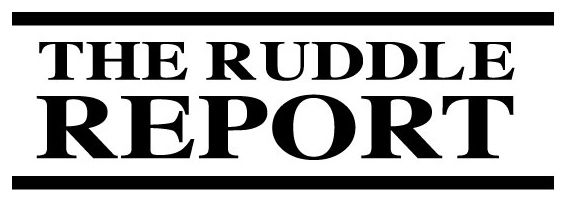
WaveOne: Helpful Hints
Greetings! This is another blog and special attention will be given to WaveOne, the new single-file / single-use system by Dentsply Maillefer (Dentsply Tulsa in North America).
To put this blog into perspective, I’m going to tell you what I learned about a file that I helped co-invent. So when you co-invent something and it takes four years to get to market, you think you know quite a bit about that instrument as you spend hundreds of hours during the validation process. Then, you write articles about it, and it formulates your thinking even more. Then you give lectures about it, and your lectures are evolving as your speakage improves, as you better understand how to connect with the audience and help them have the same experiences that you’re having.
So I was recently in the Middle East. I went to three cities, Al-Khobar in the eastern province of Saudi Arabia; Jeddah on the Red Sea; and then Kuwait City in Kuwait. I gave nine workshops, 30 doctors at a time, so 270 doctors attended my workshops. I noticed that as I improved on my teaching, the colleagues taking my workshops, their performances improved, and if you know Ruddle at all you know that, for me, nothing in life is that important, unless you measure. So we must measure what it is we’re trying to do so we can figure out if we’re actually getting better.
So I taught the WaveOne instrument technique, single-file technique, in didactic lectures to hundreds of people. Then came the workshops. I started in Dammam as I said, and in Dammam, we did three workshops at 30 each… That’s a little less than a hundred. What I noticed was every workshop class got a little bit better. So, then I was left with the thought that night, “Did they get better because the groups were better? Were the second and third groups better than the first and second groups?”… that kind of thinking. Or, “Did I really learn some of the mistakes I saw in the first group, emphasize those mistakes and do teacher rounds in the second group, learning from the second group, and applying even better teaching methods to the third group?” I would have to admit to you very frankly, the teacher got better. As the teacher got better, the results got better.
Here is what the students were doing. There is a lot of different mediums one can use when they’re doing workshops, but when we’re shaping canals, obviously teeth are not always readily available, especially if you’re doing hundreds of doctors over about 2-1/2 weeks. So, typically we choose plastic, which is a very poor medium to practice anything on because plastic is very, very unforgiving. It’s grabby. Any little mistakes that occur along the way are magnified. Plastics multiple times softer than dentine. So you don’t have the Brinell hardness number of the dentin to hold the file centered, especially in curvature.
So, coming back to plastic, there is at least three models one can use in workshops. One has a gentle curve… probably 20-25 degrees. There is another model that has about a 60 degree curvature. Then there is the S-block. The S-block has multi-planar curvature and each curve is significant. One curve is about 35 or 40 degrees, and one is probably about 25 or 30 degrees. So it’s a pretty good measure of how one’s doing. Everybody in my workshops uses the S-block because I want them to have a real challenge… Not just a “big piece of cake” and go home thinking they mastered something. What you see in an S-block, if you don’t perform well and follow the step-by-step teaching, is you’ll notice that there is a tendency for belly, there is some internal transportations or ledges, and then, of course, it’s very easy to have an apical transportation around the second curve.
So, after I had done all the tours… after I had finished all the workshops… I had modified my teaching along the journey. Now I want to share with you what I learned and I’ll say it in just a few words. With WaveOne, it’s absolutely critical when we start, always with the Primary 25/08 file, that we have a glide path. So, obviously, we want to emphasize the importance of a smooth, reproducible glide path. But when you have a glide path, I can give you four hints that could make a major difference on your next practice case. What I noticed is that clinicians tended to push, they tended to press. When the instrument didn’t want to advance, they would take it out, but by then a lot of times a lot of debris then pushed apical to file and was encouraging or promoting a block.
So, here’s the thing. When you run the 25/08 into the glide path and you initiate shaping procedures in the coronal one-third, I want you to say, “Brush.” I can’t hear you, but I know I’ve asked you, you’re all saying brush. I had my rooms yell “brush” as a group collectively and it was amazing how loud 30 people could actually get when I said, “Brush.” The logic in this madness is I want you to brush; I want you to paint. By painting, you’re making lateral space, and by making lateral space the instrument can run. Say, “Run.” Yell, “Run!” Think, “Run.” If you brush, the instrument will run and it will more readily progress towards the working length.
So the first concept is to brush to make lateral space. Lateral space allows the second concept to kick in and that’s running, and that means progression.
Finally, if I put a plate of food in front of you and if it was a rather large plate and I gave you a fork and said, “Eat it”, you wouldn’t eat the whole plate of food in one bite. So the next thing I learned is the colleagues were trying to advance or progress over too big of a linear vertical length at one time.
So I had to emphasize small bites. In other words, you only let the file run in two, three or four millimeters, take the file out, clean it’s flutes, and then always irrigate, recapitulate with your 10 file to break up debris, move it back into solution, so you can re-irrigate. So we always irrigate, recap, and re-irrigate after we remove an instrument… each time, every time, all the time. If we do those small bites and work our way progressively towards length, we’ll have a nice journey.
The last comment was have a known working length. Do not run instruments out through the end of a root canal that you’re shaping, especially in multi-planar curvature, because once the instrument arrives at length, it has cut its shape. If you run it long, the instrument wants to straighten out because of shape memory, and you’ll begin to relocate the foramen on the external root surface. That’s a transportation.
So in summary, if you take these four points (brush, progress, small bites, known working length) and think about them carefully during your next Wave One shaping exercise, you will do a better shape. And it will be measurable. So how do we ultimately measure the final shape?
We ask ourselves, number one, “Does it have a continuing tapering preparation from the orifice to the terminus?” Everything apical should be getting narrower and narrower as we progress over the shape of the canal.
The second mechanical objective was/is, maintain the original anatomy. Don’t forget the canals turn, obviously, mesial and distal on our radiographs, but they also turn buccal and lingual. Those are the hidden curvatures, they’re not seen radiographically… so we speak of canals having multiplanar curvature. So, we need to understand that to maintain the curvature, mechanical objective number two, is another call to go with the canal in its multiple planes and just shape it around that axis, that existing axis, of location.
The third mechanical objective is maintain the position of the foramen. Don’t move, don’t relocate, the position of the foramen as it was physiologically and iatrogenically move it on the external root surface.
The final, the fourth, mechanical objective is, keep the foramen as small as practical. There is no need to take it up to a routine size, because that’s what you learned in school… Those are other blogs. There’s more information on keeping the foramen as small as practical, but if you learn to do: Brush, run, small bites and stay inside the canal with a known working length… You can measure, using the four mechanical objectives for shaping canals, and understand perfectly along your journey, if you’re improving. Then, you can make the adjustments as indicated.
Thank you very much!



